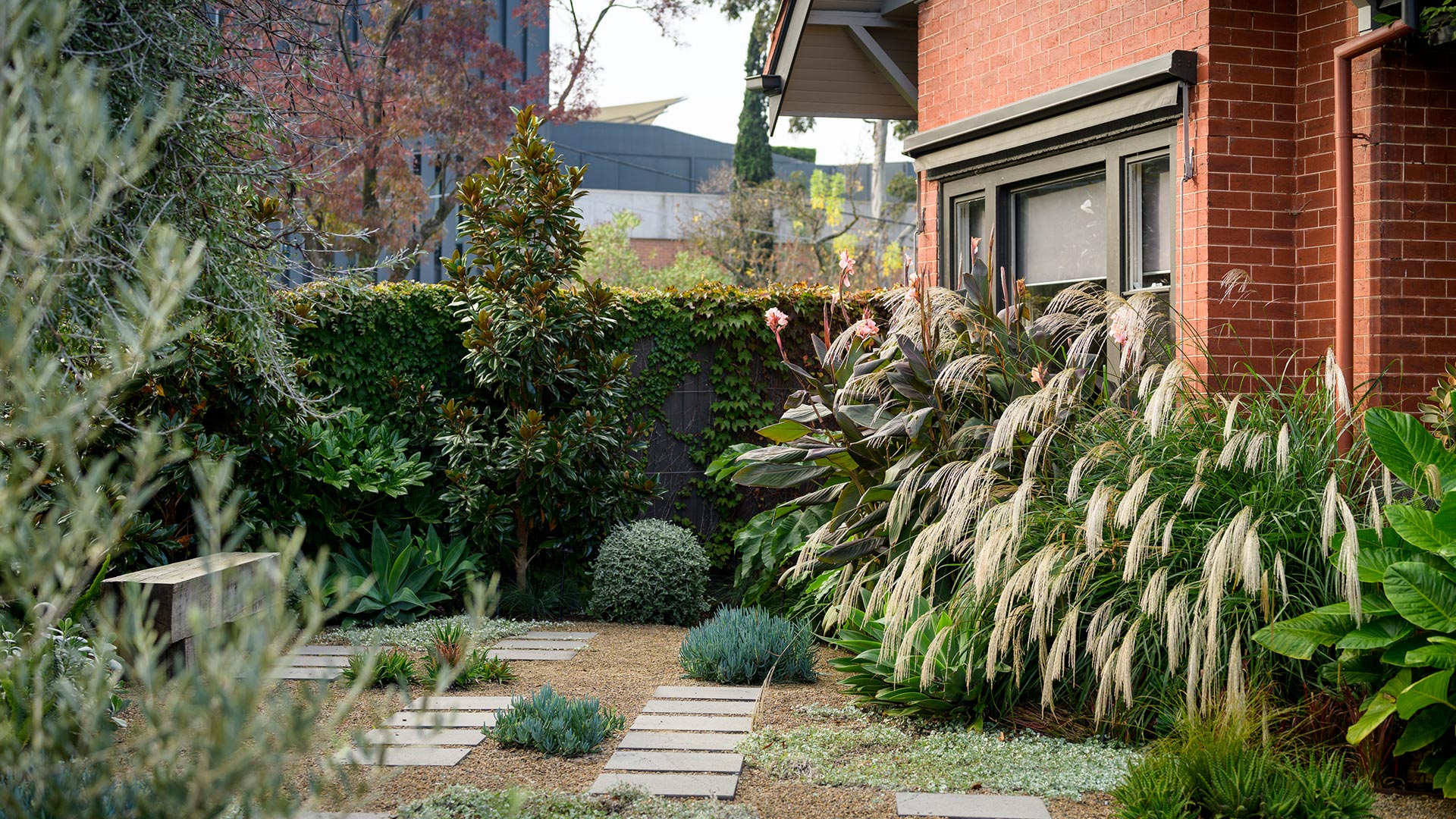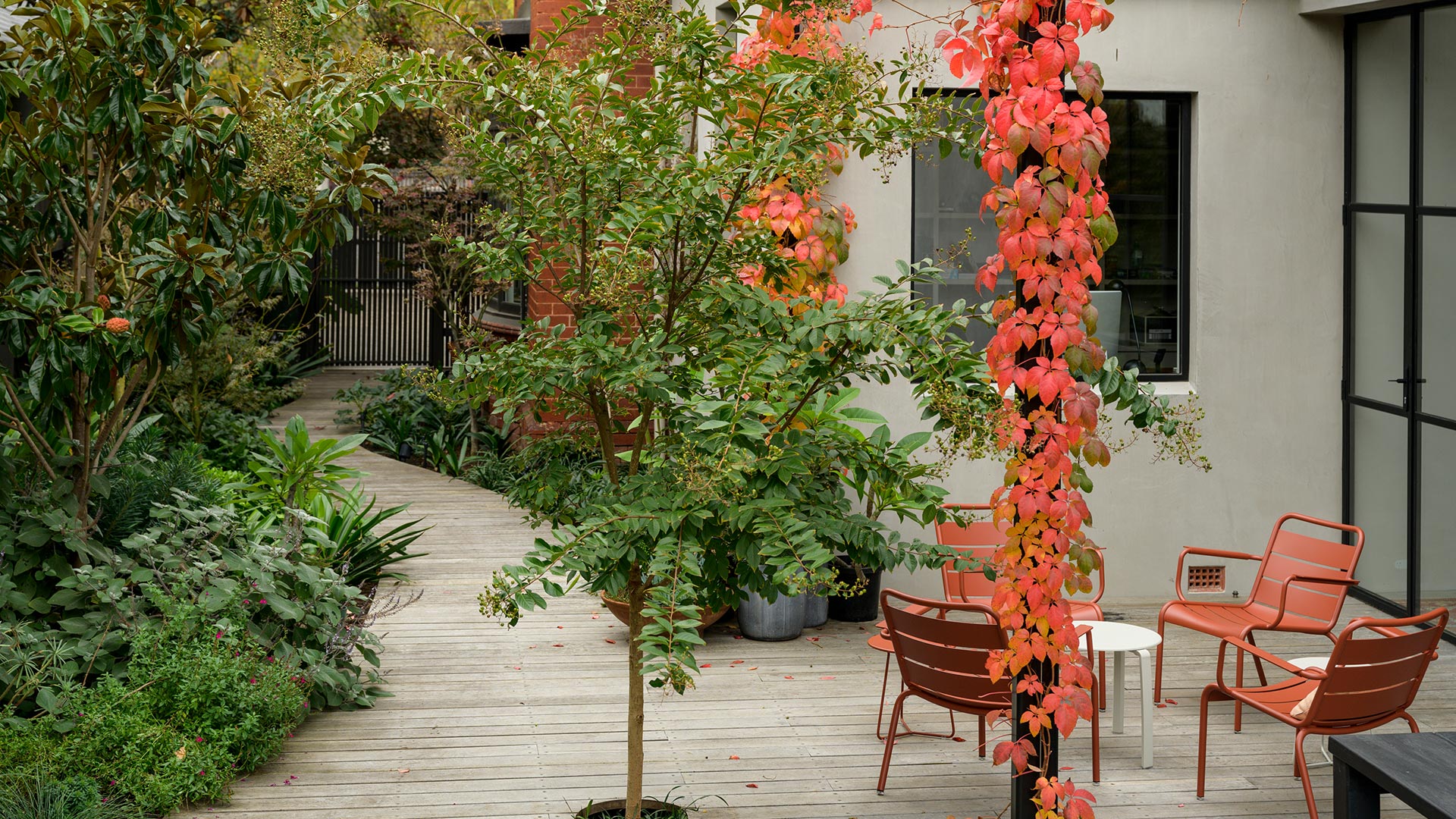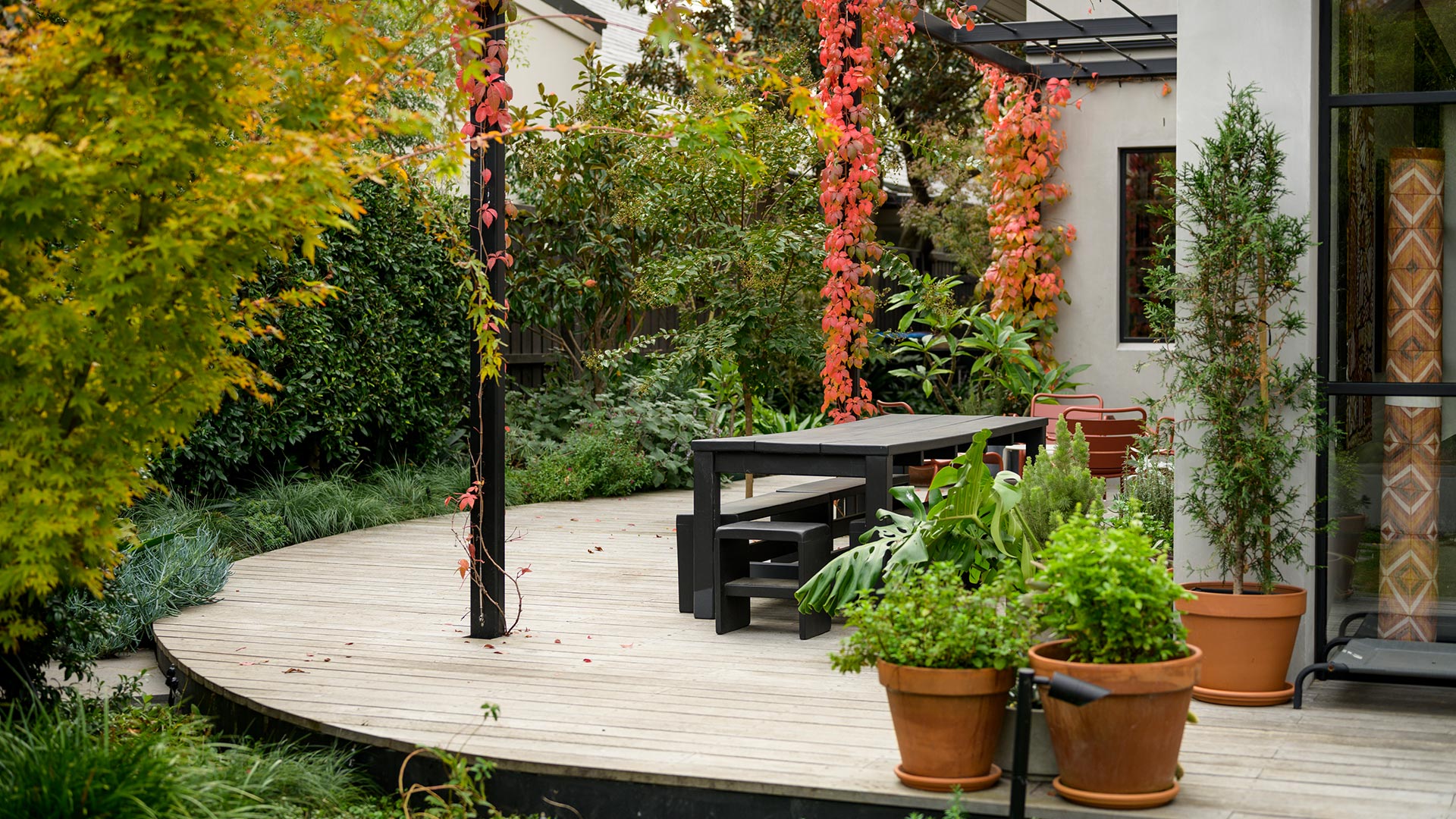Established in 1961, the purpose of the NGVWA is to support the interests of the National Gallery of Victoria in funding works for the NGV collection as well as a travel scholarship for NGV curators. This is achieved through a program of interesting events including lectures, seminars, visits to private and regional galleries, opportunities to study garden history and design and social events with an arts based theme. The annual Garden Day is always highly anticipated and frequently sold out.
This garden transpired as the result of an extension and renovation to the house designed by Templeton Architecture and Design. The Edwardian red brick home was extended to the rear with a new, rendered concrete form including large, steel-framed glazed doors with a wider outlook to the garden.
The owners employed Kate Seddon to reinvigorate the outdoor spaces and design a garden that ties the home to its surrounds. Plants are grouped for textural contrast, creating distinctive shapes and patterning, with colour carefully selected in an artist’s palette of silvers, blues and greys, as well as warm tones and lush greens. The design intention was to have change and colour variation throughout the year, with evergreen plants interspersed with deciduous and perennials to ensure there is always something special on view.
The garden has several different microclimates ranging from the wet clay at the front to very dry loam to the rear. It continues to be a process of experimentation and review to get the planting right. Most of the plants have been chosen for their hardy drought-tolerant qualities.
At the front of the property, the exposed aggregate driveway and bluestone inset pathway detail was retained and the angled pavers were extended across to a gravel garden bed featuring plants of texture, colour and form. Subsurface water had made for a poorly drained garden bed and lawn that had struggled. The beautiful weeping pear, Pyrus salicifolia was retained, but the rest of the planting of Magnolia ‘Sweet Carolina’, clipped mounds of Pittosporum ‘Miss Muffett’, Teucrium fruticosa, sculptural and textural forms of Tetrapanax papyrifer, Agave attenuata, Fatsia japonica, Asparagus densiflorus ‘Myersii’, Beschorneria septentrionalis and softer, strappy elements such as Miscanthus transmorrisonensis and Lomandra ‘Frosty Tops’ have only been in for just over eighteen months. In the gravel Dichondra reptens ‘Silver Falls’, Aloe ‘Gemini’ and Senecio serpens sprawl, with Cussonia paniculata were planted to create an attractive outlook from the front living room.
The garden bed dividing the entry path from the driveway had been surrounded by low retaining walls, which were removed to allow easier access out of car doors. Drainage work was done in this garden bed to ensure it did not retain water and create boggy conditions for the newly planted olive trees. These were selected to establish an appealing and welcoming arrival, from what was largely driveway surface in the front garden. Further garden beds were introduced to soften the connection between the house and the driveway, introducing more plant interest and texture.
The owner’s pots were moved to either side of the front entry, showcasing succulents and sculptural plants such as Kalanchoe beharensis, Crassula undulatum, Kalanchoe ‘Silver Spoons’, K. ‘Copper Spoons’, Aloe plicatilis and cascading ground covers.
The rear garden had been the location of a lagoon- like shallow pool surrounded by a rockery. This was removed and, in its place, lawn and a casual seating area were incorporated, creating another outdoor space for different generations to enjoy. An extensive deck emphasizes the new renovation, and its soft curves move into a sinuous pathway down the side of the house. Feature Lagerstroemia ‘natchez’ and Acer palmatum ‘Osakazuki’ are planted within cut outs in the deck. Japanese maples from the previous garden form a woodland walk from the side gate to the rear garden. This area is underplanted with various Hellebores (H. argutifolius and H. ’Winter Elegance Burgundy’), Veltheima bracteata, Fatsia japonica and Clivia miniata. Parthenocissus sikkimensis has been planted to climb up the bare lower trunks of the existing magnolias. Further magnolias (M. ‘St Mary’s and M. ‘Sweet Carolina’) were planted to provide privacy and screening, following the loss of the neighbour’s peppercorn tree just prior to the renovation.
In the rear garden, the neighbour’s Ulmus glabra ‘Lutescens’ golden elm creates fabulous shade, but this cannot always be depended upon, so planting of additional Ficus hillii along the boundary, as well as a jacaranda and Brachychiton acerifolius, allow for the garden’s vista to change over time. The evergreen ash sits as a beautiful backdrop to the curved concrete seat, and the garden shed is covered in Boston ivy which creates stunning Autumn interest along with the Virginia creeper on the pergola. Planting of Setaria palmifolia contrasts with Melianthus major, Bartlettina sordida, Strobilanthes gossypinus, and perennial interest of Persicaria affinis, Digitalis lutea, Epimedium ‘Sweetheart’, various Euphorbias and Salvias, along with more Asparagus densiflorus, Pittosporum ‘Miss Muffett’, Lomandras and Miscanthus.
With the intention of not changing things for changes sake, the hard landscaping in the front garden was reinterpreted, rather than overhauled. Plants were recycled and replanted. The two seats in the garden had been made from recycled pier timber by the previous designer, and these were repositioned with legs under to provide more elevation. The side boardwalk pathway was built partly from the recycled timbers of the previous deck.
The owners would like to thank Kate Seddon and Michael at Alistair Branwen Horticulture for their preparation of the garden for this day.





